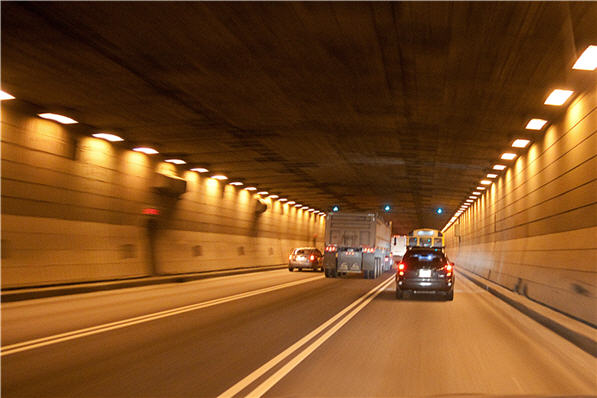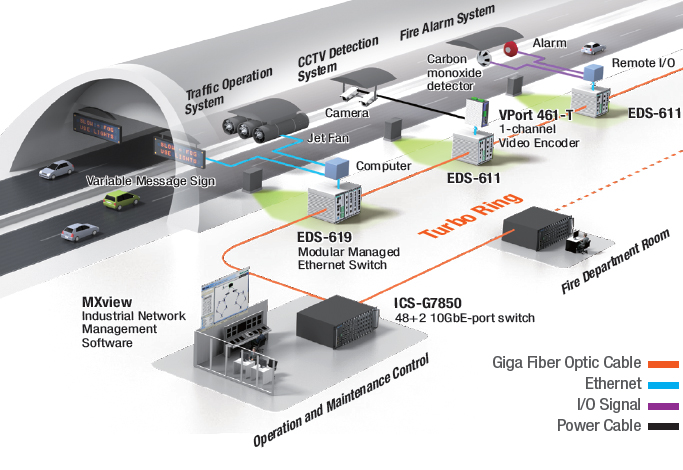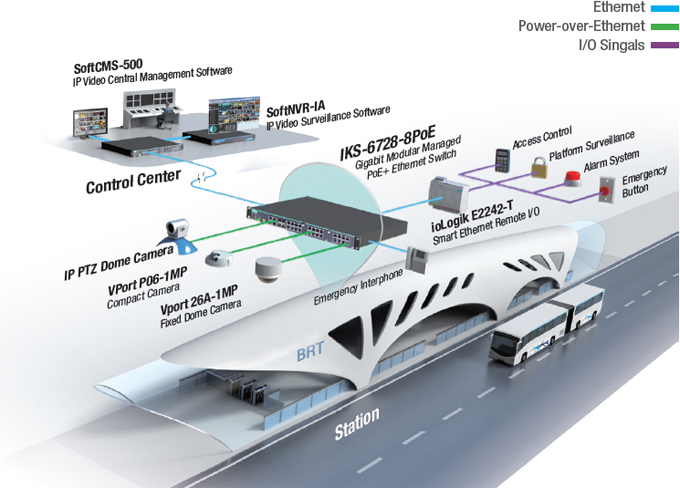Nulla facilisi. In vel mauris risus.
Praesent non velit ut libero condimentum pulvinar sed vitae tellus.
Vestibulum id tristique elit. Suspendisse posuere rutrum sodales. Nam id elit ac sem iaculis lacinia posuere vitae metus.
As a city grows, so does the volume of people, goods, and cars that need to move through it. More roads and facilities may improve transit capacity, but there's no guarantee they'll reduce congestion or travel time, or enhance safety. Hence, real-time information on road conditions and local weather is important to help travelers avoid traffic obstacles, and make better travel plans.
Data networks for road systems usually support comprehensive road signaling, surveillance, and security response features. To sustain reliable, real-time operations over long periods, the network infrastructure needs more than large, fast data transfer. It also requires rugged networking capability and robust devices to withstand the challenges of the outdoor environment. Efficient network management is also important as it should provide quick and easy operations, including installation, monitoring maintenance, and troubleshooting. All these factors combined allows you to meet the dynamic network requirements of intelligent transportation systems.
The two case studies below demonstrate how the right choice of underlying network helps improve traffic efficiency and public safety.
Case 1: 10GbE Core Backbone for Tunnel Surveillance
The fourth bore of the Caldecott Tunnel in the Oakland Hills opened to traffic in 2013. More than 160,000 drivers save time and fuel everyday thanks to the Caldecott tunnel. The new tunnel bore is over 3,300 feet long, and it is ventilated by 19 jet fans.

System Needs
To ensure traveler safety and help traffic flow efficiently, the tunnel’s fire/life safety emergency systems can rely on a unified network infrastructure to detect and suppress fire to protect travelers.
There are linear heat detectors (LHD) for fire detection and carbon monoxide detectors to monitor air quality. Video image detection (VID) cameras are in charge of traffic monitoring, intelligent video analysis, and event notification in case of any incident inside the tunnel. When abnormal conditions occur, the system activates the ventilation jet fans, and provides motorists with instant information through variable message signs and the tunnel radio system.
Solution: Edge-to-Core Network Integration
To support the massive data processing demand of 24/7 video, messaging, and emergency services, the tunnel uses industrial core switches in the tunnel and the Operation and Maintenance Control (OMC) center as the communication backbone.
These high-port-density modular managed switches, each with 3 Gigabit uplink ports and up to 4 slots for fast Ethernet expansion modules (4 ports each), are installed along the highway and tunnel, connecting various edge devices. Multiple H.264 video encoders, capable of -40 to 75°C operation, encode video from up to four analog VID cameras each.
To enable real-time maintenance of the tunnel infrastructure network, a network management platform with a highly-intuitive user interface is installed at the control center. This platform auto-detects network devices, generates a visual network topology, displays the status of all network devices and physical links for real-time monitoring, generates event logs, and offers network event playback for easy troubleshooting.

Advantages: Enhanced Efficiency and Safety
The tunnel provides a smooth and dependable route for traffic. This smooth operation demonstrates how the 10-Gigabit network infrastructure integrates with various tunnel systems to safeguard the tunnel. These systems include signaling, surveillance, ventilation, fire and air quality monitoring. The network's edge-to-core connectivity features superior bandwidth, millisecond-level self-healing redundancy, wide temperature range operation, as well as easy management. Together, these features help the tunnel's 160,000 daily travelers enjoy a safe and efficient journey.
Case II: PoE-Wired Surveillance for City Bus Transportation
Public transportation requires real-time information integration to protect public safety and maintain traffic efficiency. A city in Asia has invested in six BRT (Bus Rapid Transit) lines across the city and a networked real-time control and monitoring system to ensure their safe, trouble-free operation. The network covers all BRT stations and the control center. Taking into consideration the hierarchical nature of BRT systems, the system relies on a powerful Ethernet backbone to support centralized management and massive data and video aggregation from over 40 BRT stations.

System Needs

Related Links